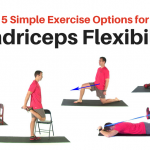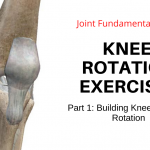To build lower back strength and endurance we need to move beyond planks, bridges, and brrd-dogs. That was the key message from Part 1 of this article series. We need to load the spine though it’s full range of motion. But how?
For this we need to utilize a movement that incorporates full ROM of the spine. But we also need a movement that we can progressively load. That is really the key to strength training.
If the exercise is too easy it won’t provide enough of a stimulus to promote strength and tissue adaptations. But if it is too difficult, movement quality will suffer. The body will compensate by creating motion through the wrong joints or generating tension through the wrong muscles. (Here wrong simply means not the muscles or joints we are trying to target.)
These compensations will make our exercise prescription far less effective. Remember, strength training only leads to stronger muscles and more resilient connective tissue if the stimulus gets to the intended tissue.
More Pelvic Tilts – But Now It’s About Strength, Not Mobility
This again is where pelvic tilts come in. We have talked about the value of these motions in the past with respect to spine mobility.
Remember, pelvic tilts and their many variations can create focused and deliberate motion through the lumbar joints. And when done properly they can target and isolate the deep muscles that are so important with spine health and control. (Once again, see Part 1.)
But here the focus is going beyond mobility. Here we are progressing to more loaded pelvic tilts. By changing variables such as intensity, frequency, and duration, we can change the intended effect of the exercise.
The Exercises: Loaded Pelvic Tilts
To target strength we need to add more resistance to a movement. This would typically be done by adding a heavier weight or a stronger resistance band. But this is difficult to do with pelvic tilts. So instead we’re going to take advantage of internal resistance.
We’ll do this by adding abdominal bracing. And we’ll also focus on holding more intense contraction at the end ranges of the motions.
Abdominal Bracing
Abdominal bracing is simply an active contraction or conscious “tensing” of the trunk muscles. This was popularized by McGill in his prominent textbooks and back pain courses. The idea here is that this contraction will create more stiffness and stability during more physically taxing activities like bending or lifting.
So we’re going to use this abdominal bracing technique, but in a different way. Instead of bracing to prevent spine motion, we’re going to perform an abdominal brace while we’re moving the spine. More specifically, while we’re performing our pelvic tilts. So additional stiffness provided by the brace creates more resistance to the motion.
But the effect of the brace extends beyond the physical. It also plays a critical role in training the nervous system. Here this CNS has to learn to hold a low level generalized contraction of the trunk while also coordinating motion of the intervertebral joints. Now we start to see how this task is much closer to how the spine and nervous system have to function in real life.
Endrange Holds
The other critical element we’re going to utilize for strength development are endrange holds. Remember, we are trying to load the spine through a full ROM. So we’re going to move to end range. But we can also use this endrange as another form of resistance.
We are using the end position as a barrier/resistance to push against. It’s a form of isometric contraction, but performed at the end of the range. Strength in these end-ranges is critical. If the body cannot generate force in these end positions the joints cannot be protected in these postures.
So to be effective the patient or client must understand this concept of end range. And they must be able to recognize when they are at the end range and be able to control (i.e., feel the appropriate muscles tense and contact) the muscles in these end ranges. This is why developing spine mobility and control is so importat pre-cursor to strength training.
Time Matters Too
And we’re also going to manipulate duration. So not only are we going to increase contraction intensity with more intense contraction at this endrage. But we’re also going to hold it longer, for a duration of 5-10 seconds. So these contractions really become a type of high-intensity isometric contraction in these outer ranges. This will create an additional contractile stress to the muscles and help stimulate further strength/endurance gains.
The Exercises
1.Quadruped Loaded A-PPT (w/ blocking)
Here’s how to perform a basic loaded/strength-based pelvic tilt incorporating both lumbar flexion and extension. This is the quadruped version, but remember you can perform this from a supine position (not shown here but if you are a My Rehab Connection subscriber you will find it in your exercise library.)
Quadruped Loaded Posterior Pelvic Tilt
Here’s how to perform a loaded/strength-based pelvic tilt with a specific focus on lumbar flexion.
3. Quadruped Loaded Lateral Tilt
And finally, here is how to perform a lateral pelvic tilt with a strength/endurance focus. Again, the exercise shown here is done from a quadruped position, but the same can be done from supine.
Exercise Programming – How Hard, How Many, How Often
So those are the basic exercises themselves. But we don’t just need to add more intensity. We also need to consider volume and frequency. And we need to consider how to integrate these exercises into patients/clients existing treatment and exercise program.
Sometimes this can be a challenging, especially given that we also want to continue working on mobility as part of the overall spine program.
These are all critical factors that we will cover in detail in the Part 3.







